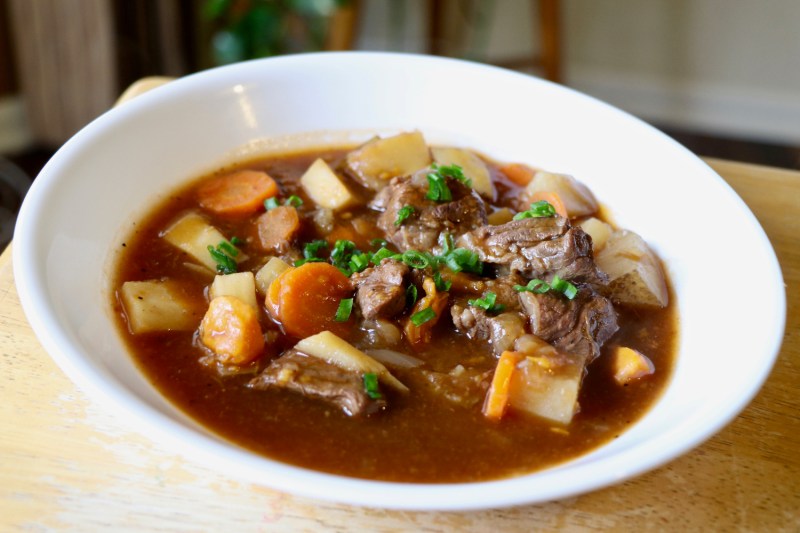St Patrick’s Day is upon us, which loosely translates to green beer and folk music. And while we love to get into the spirit with dyed beverages and fish and chips, there’s a lot more to the Irish lifestyle than a pint of Guinness and some corned beef.
Irish cuisine may not be famous, but it’s full of great items that can take the brisk out of a chilly spring day or add a little something new to your dinner table. Read on for a proper primer on all things Irish cuisine.
History of Irish food

A fertile island with a long history of human inhabitance, Ireland is no stranger to food. Even 8,000 years ago, residents were hunting and gathering, taking advantage of the spoils available on both land and in the sea. By the Gaelic era, the Irish were eating grains and taking advantage of dairy, making cheeses and fermenting milk. Beef and pork grew popular, and farming also brought to the plate things like root vegetables and hazelnuts. Along the way, customs and ingredients from the UK, Norse culture, and other European countries helped shape cuisine.
By the 19th Century, Ireland became synonymous with potatoes until a massive blight damaged the crop in 1845, causing significant harm to the nation’s food supply and people. Today, it’s a vibrant scene that pays homage to some of the hearty classics while bringing on things like Indian curries, Chinese food, modern Scandinavian cuisine, and more. Irish cuisine has increasingly looked to its own backyard as of late, taking advantage of native edibles ranging from shellfish and wild game to foraged fruits and vegetables.

Essential food and drink
We love corned beef and a solid piece of soda bread. But Ireland’s got a lot more going for it in the culinary department, as the following traditional dishes suggest.
Black Pudding
This kind of blood sausage is made from pig or cow’s blood, blended with fat, oatmeal, groats, and more. Generally, the sausage is hit with herbs, often pennyroyal. Neighboring countries make the stuff, too, although Drisheen is a specific Irish type popular in the Cork area (and sometimes made with sheep’s blood). The high-protein snack can be broiled, fried, baked, or grilled and served with anything from a full breakfast to Scotch eggs.
Coddle
Sorta like Ireland’s answer to the ubiquitous hot dish of the Midwestern United States, coddle is often made with leftovers. Think carrots, potatoes, sausage, and bacon, often hit with some herbs like chives and parsley. It gained a big following in Dublin, a great one-pot warmer that involves braising everything in the juices of the meat you’re cooking with. Coddle does not look sexy, but it warms the eater to the bone and serves as a great base template that can be tweaked in infinitely different ways, according to taste.
Colcannon
Arguably the most fun Irish dish to say out loud, Colcannon celebrates the potato. Translating to “white-headed cabbage,” the dish involves potato, cabbage, butter, and milk, served hot. It has just four ingredients, but again, satisfaction is guaranteed (and it pairs nicely with an ale or stout). We like slightly more dressed-up versions that use things like grilled leek or kale in place of cabbage.
Fermented milk
A lot of nations have some version of fermented dairy but Ireland’s been doing it for about as long as the tradition has been alive (close to 10,000 years). The result is a more dynamic beverage, easier to digest with a yogurt-like sharpness. Bonny clabber is what the locals often call the stuff, which can be enjoyed neat but is usually used in cooking as it’s a bit thicker.
Irish stew
Otherwise known as Ballymaloe, this regional stew tends to incorporate mutton, potatoes, onion, and parsley. The stew can also be made with beef or even goat meat, and the broth is generally quite simple. Traditionalists use only certain parts of the animal protein (lamb neck, for example); more progressive cooks look to additional ingredients like turnips and different cuts of lamb. The classic version of the recipe, recognized as Ireland’s national dish, only used mutton out of respect for sheep and their use primarily for milk and wool — and only ended up on our plates as older meat that needed to be cooked down a bit more.
Poitín
Everybody knows about Irish whisky and the Emerald Isle’s famous dark beers, but what of poitín? The spirit is a bit like moonshine, often homemade from grain, sugar beet, potatoes, or other ingredients. The spirit has its rightful place in Irish folklore, popular among the working class of old and a fair way to take the sting out of a blustery day. While still considered pretty raw and unrefined, more commercial producers are working to show a more sophisticated side of poitín.
Where to find traditional Irish food in the states

Seems every town has an Irish pub or two but what are the top spots for a good and reputable dish to have with that pint? Some of the best options in the states include The Black Rose in Boston and The Irish Rover in Louisville. Neary’s in NYC is a classic, and Owl ‘N Thistle in Seattle is a fine option. These places offer hospitable pub atmospheres with food that can back it up. And if you’d rather stay in, try your hand at one of the above dishes. You’ll find most to be relatively easy to make and very fun to tweak according to what you like most.
Eat adventurously. Check out our guide to Chinese cuisine and our Japanese cuisine guide. Your palate will love traveling from dish to famous dish.



